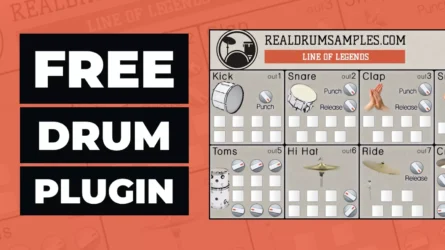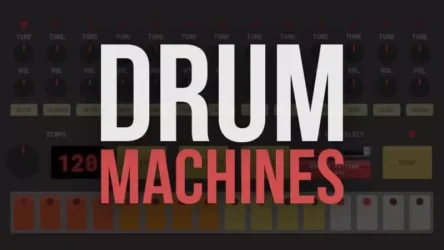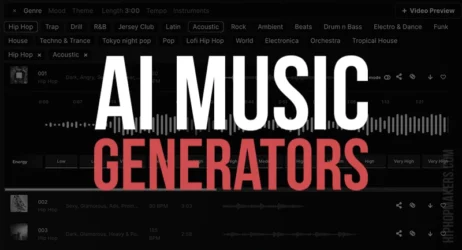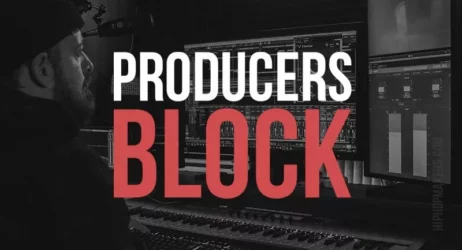This guide will answer what arpeggios are, what they are used for, examples of arpeggios, and how to play arpeggios on the piano and guitar.
- What Exactly Is An Arpeggio
- What Are Arpeggios Used For
- What Are The Examples Of Arpeggios
- How Do You Play Arpeggios
- What Is The Pattern Of An Arpeggio
- Different Types Of Arpeggios
- What Are Arpeggios On The Piano
- Chord vs. Arpeggio
What Are Arpeggios?
Arpeggios are broken chords; chords are played one note at a time rather than all together at once. They create a swirling effect by one note at a time, creating exciting melodies and harmonies. They are common accompaniment patterns in classical music, jazz, and blues.
Arpeggios are primarily used in solos to play over specific chords or keynotes. Many jazz musicians use arpeggios to improvise solos. Blues musicians often use them as well.
Arpeggios are easier to play than chords, so they are often used as beginner piano and guitar exercises to develop finger strength and agility.
You can also use arpeggios to study music theory. Each chord in an arpeggio can be analyzed to determine the relationship between notes.
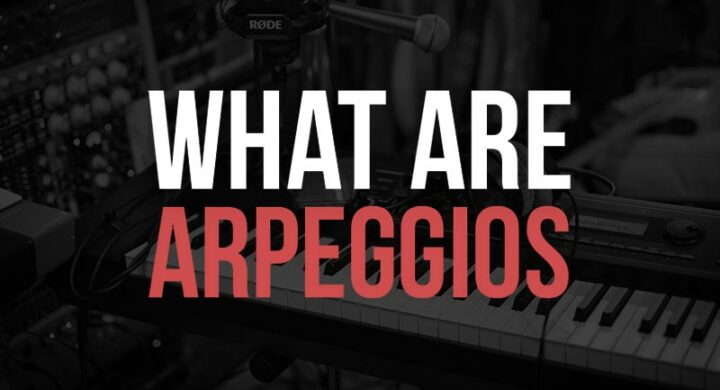
Arpeggio On Guitar
Even if you don’t know how to play guitar, you probably heard an arpeggio on your favorite rock song. Most of the time, a guitarist plays a chord on a guitar, it is an arpeggio.
The electric guitar is commonly used to play arpeggios over chords in rock music. The guitarist will pluck the notes of a chord individually, strumming it to produce an arpeggio. Sometimes this creates an echoing effect or a “swirling” effect as one note at a time is played.
Arpeggio On Piano
Pianists can play arpeggios by striking the notes of a chord one at a time or sometimes two at a time. This creates the swirling effect that is common in classical music.
Classical musicians will often play arpeggios as a warm-up before concerts, as a way to practice finger coordination and dexterity.
You can play arpeggios and classical music, improvising on the chordal accompaniment.
What Is The History Of Arpeggios?
The word arpeggio comes from the Italian word “arpeggiare,” which means to play on a harp. It is called this because the chord notes are plucked individually, in the same way you would play notes on a harp.
The history of arpeggios comes from the baroque period, in the 1600s. They developed from a technique for playing counterpoint in music. Composers would play two or three voices at a time, singing different lines simultaneously. Eventually, this technique was adapted to the guitar and keyboard instruments.
Are Arpeggios Used In Modern Music?
Arpeggios are used in many kinds of music, even pop and rock songs. You will hear arpeggios in contemporary classical music, jazz, blues, and pop music.
Modern music often pairs arpeggios with different instruments. You can hear them in rock songs when the guitarist plays a lead solo or in electronic music when the synthesizer plays a melody.
You can also hear arpeggios in country music, where the lap steel guitar often plays them along with the melody.
What Are Arpeggios Used For?
In music, arpeggios are used to play over chord progressions. You could write a whole song with just arpeggios if you wanted to.
Arpeggios make good accompaniment material because they are easy on the fingers and don’t take much concentration or effort.
They often provide interesting harmonies that work well for melody lines. Also, they can be used as riffs, like jazz musicians usually do. Or you could use them for improvised solos as blues musicians do.
What Are The Examples Of Arpeggios?
The music industry is full of arpeggio examples. Many songs use one chord, and an arpeggio will be played over the top. Let’s look at a few most famous examples.
1. Jackson 5 – “I Want You Back”
This song is an excellent example of how an arpeggio adds extra flavor to a chord progression. The song only uses the I, IV, and V chords. The arpeggios provide extra movement and interest.
2. Joe Satriani – “Surfing With The Alien”
This classic rock song is an excellent example of arpeggios used in solos. The arpeggios are played over the top of power chords in this song. This adds interest to what would otherwise be an average guitar solo.
Arpeggios are used to significant effect in this song. The chords and basslines of the song make it challenging to improvise over, but the arpeggios make it easy for guitarists to solo. This is beneficial for both the singer and the guitarist.
4. Michael Jackson – “Beat It”
This song is another example of arpeggios making it easier to improvise over chord progressions. In this song, the arpeggios play over the IV and V chords. This creates a very interesting and challenging lick, which is why it is such a famous live solo.
The intro to this song is pretty much just arpeggios being played over an I, IV, and V chord. There is a beautiful guitar solo in this song that is very challenging to improvise over, but the arpeggios make it a perfect fit for the guitar.
How Do You Play Arpeggios?
Arpeggios are played by playing the notes of the chord one note at a time rather than all together.
For example, if you wanted to play an A major chord on a guitar, you would play the notes A, C, and E simultaneously. If you wanted to play an A major chord as an arpeggio, you would play the notes one at a time: A, C, E. Then back to A, C, and E again.
You can play arpeggios on the piano as well as a guitar. Aprregios help you to learn and develop finger dexterity on the piano.
Most piano beginners start with arpeggios. Arpeggios are helpful because they only play the notes of the chord one at a time, which is easier to control than playing chords.
What Is The Pattern Of An Arpeggio?
The pattern of an arpeggio is the order of notes that make up a chord. For example, if you wanted to play a G major chord as an arpeggio on a piano, you would play the notes G, B, and D in that order.
Arpeggio patterns help musicians learn music theory and understand how to play over chord progressions. You can use arpeggios to improvise or write your own melodies.
What Are The Different Types Of Arpeggios?
There are different types of arpeggios. You can have a major chord, minor chord, augmented chord, diminished chord, dominant chord, and much more. Let’s take a look at them one by one.
1. Major Arpeggio
The major arpeggio is the most popular type of arpeggio. It is formed by playing the major scale’s root, third, and fifth notes. It is mainly used by classical musicians and found in blues and jazz.
2. Minor Arpeggio
The minor arpeggio is formed by playing the minor scale’s root, flat third, and fifth notes. It is used by classical musicians as well as jazz and blues.
3. Augmented Arpeggio
The augmented arpeggio is formed by playing the augmented scale’s root, third, and sharp fifth notes. It is used in jazz and blues, but not classical music.
4. Diminished Arpeggio
The diminished arpeggio is formed by playing the root, flat third, and flat fifth notes of a diminished scale. It is mainly used by classical musicians but has found its way into jazz and blues as well.
5. Dominant Arpeggio
The dominant arpeggio is formed by playing the dominant chord’s root, third, fifth, and flat seventh notes. It is often used in blues and jazz, but not classical music.
What Are Arpeggios On The Piano?
Arpeggios on the piano are easy to play once you get your hands used to playing chords. There are many different types of arpeggios, but the most common types are major and minor.
To play an arpeggio on the piano, start with your left hand and play a chord. Your right-hand goes over the left hand and plays a melody line. Repeat this process to play another chord. You can use your thumbs or any other fingers to play the melody.
When you get used to playing arpeggios, you can start experimenting with different chords and scales to make your own melodies.
What Is The Difference Between A Chord And Arpeggio?
The main difference between a chord and an arpeggio is that chords are played all together while arpeggios are played one note at a time. An arpeggio also has fewer notes than a chord.
Arpeggios are often used in solos while chords are played more rhythmically. Arpeggios often use the root, third, and fifth notes of the chord they belong to. Chords are usually played with additional notes like seventh or ninth notes.
Arpeggios Overview
An arpeggio is a chord that contains several notes played at once instead of all at once. By playing one note at a time, they create a swirling effect that creates exciting melodies and harmonies. They are often found in classical music, jazz music, and blues music.
Learning to play arpeggios is a key skill for music creators. When you play a piano chord on the keyboard, instead of pressing all the notes simultaneously, you press individual notes one by one – that’s an arpeggio. It’s like playing a broken chord, letting each note sing its own little melody, from the bottom note to the top note.
On the piano, you can play piano arpeggios using your first, second, and third finger. For instance, the left hand can follow a particular pattern on the keyboard, starting with the root note (the first note) of the chord.
It’s like climbing up a ladder, one step at a time, until you reach the highest note and come back down in descending order. The same pattern can be followed for both major and minor arpeggios.
Just like on a piano, on a guitar, you play guitar arpeggios by pressing the strings in a certain order, not all at once. The difference between playing block chords and arpeggiated chords is like the difference between a group of friends shouting together and each one speaking in turn. In arpeggios, the same notes are played, but individually, not all together.
Arpeggios and scales share a lot in common. The major scale, for example, can be played as an arpeggio with the same notes in the same order. It’s like taking a walk through a park, but instead of walking straight, you zig-zag. You’re still covering the same ground but in a different way.
Arpeggios add a special touch to the music, like sprinkling magic dust over a song. They’re found in all types of music, from classical music to modern pop, and learning to play them can open up a whole new world of sounds. The word “Arpeggio” comes from the Italian word for harp, as harpists often play chords in this way.
When you’re learning arpeggios, you should practice playing them in different shapes on your instrument according to the given scale. Whether you’re working with major or minor chords, remember to start slow. This can be a tricky technique at first, but with practice, it gets easier.
To sum up, an arpeggio, whether played on a piano or guitar, adds depth and variety to music. They’re like the secret ingredients that can make piano music or any other type of music stand out.
If you’re a beginner or an experienced musician, spend some time practicing arpeggios. Like a painter learning to mix colors, you’ll find that arpeggios can add new shades and tones to your musical palette. Remember, the journey of playing arpeggios begins with a single note!
I hope you now have a good understanding of arpeggios and how to use them when creating music.

